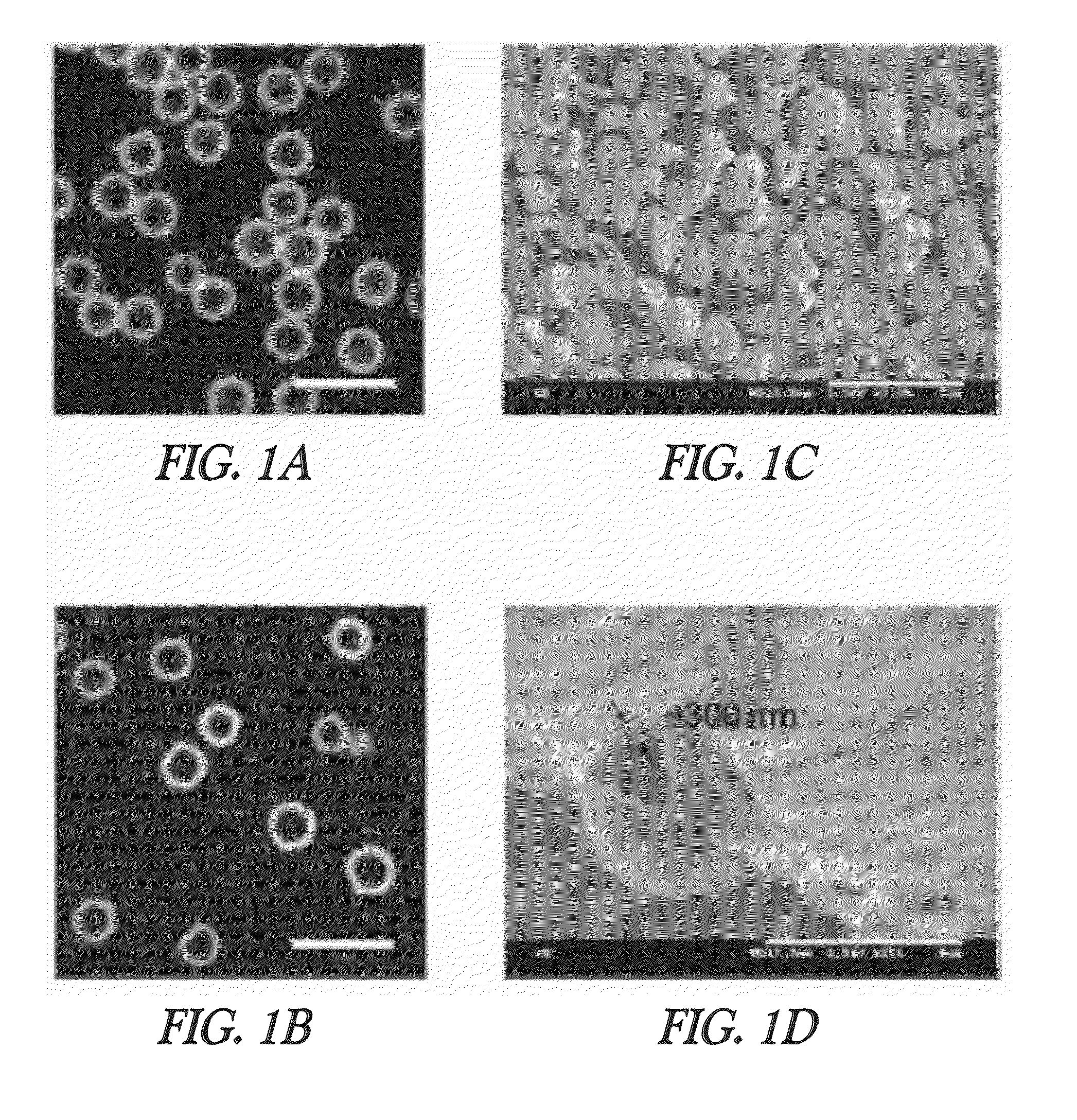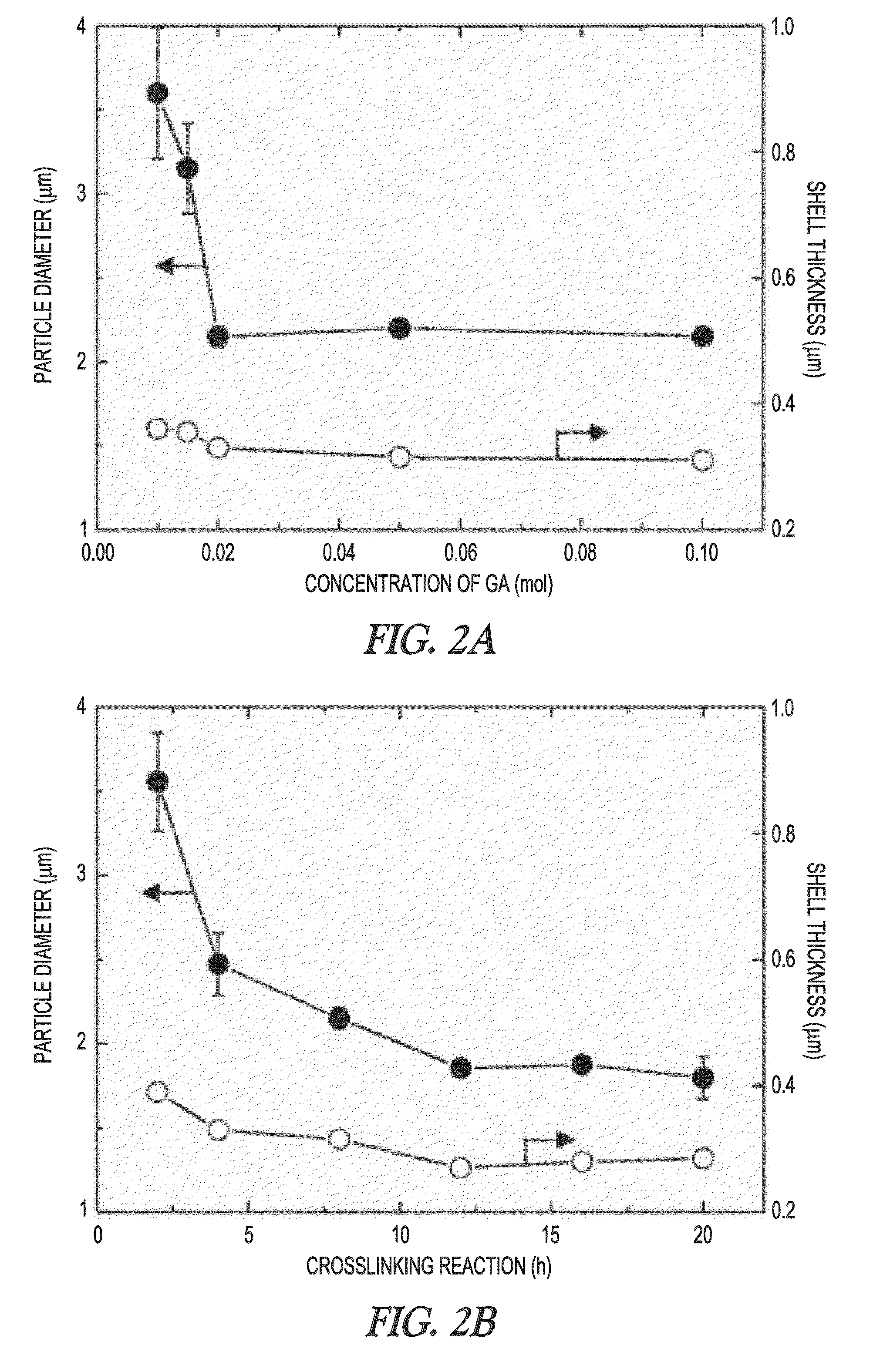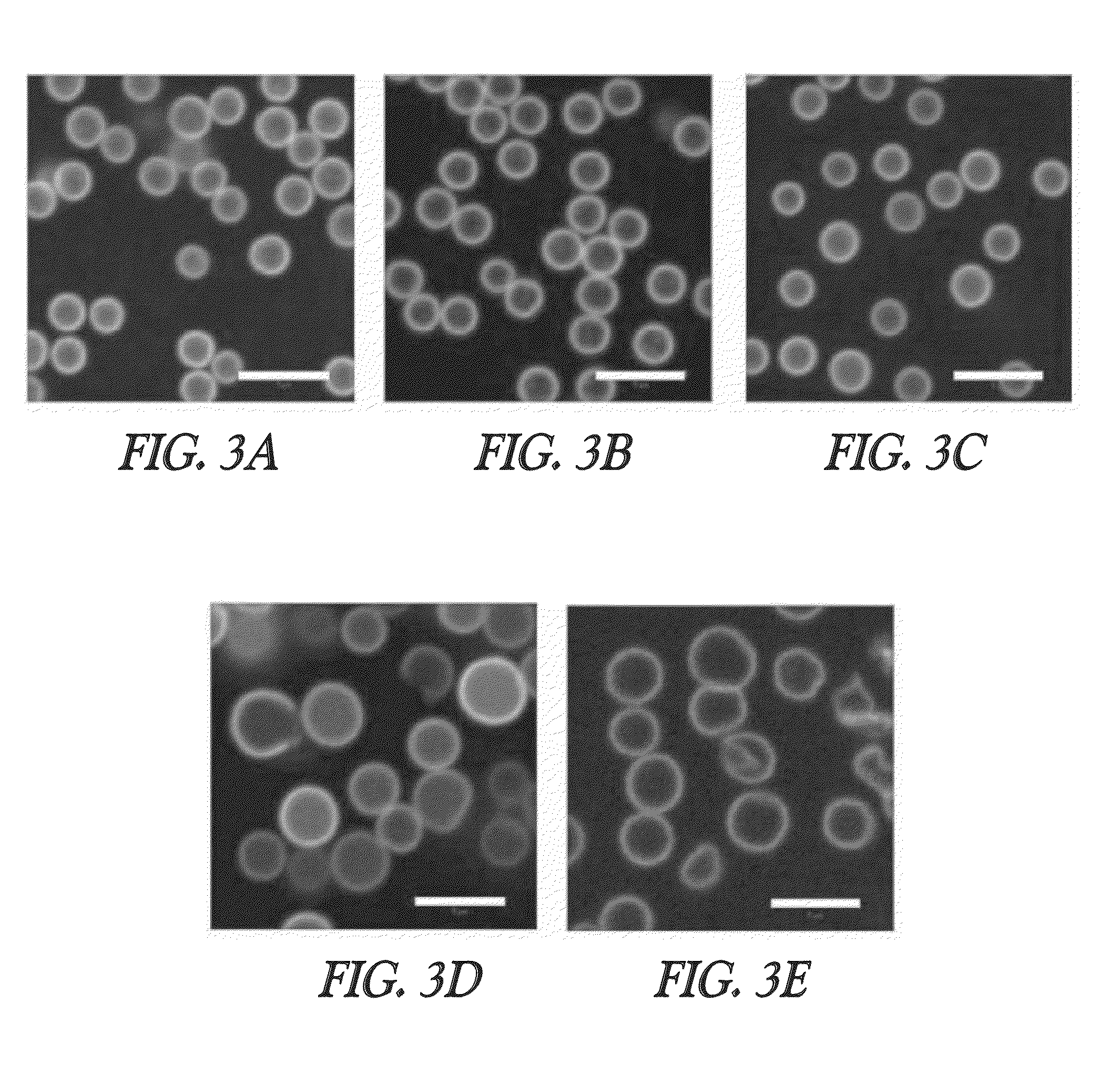Hollow hydrogel capsules and methods of using the same
a technology of hollow hydrogel and capsule, which is applied in the direction of separation process, insulation, borehole/well accessories, etc., to achieve the effect of high degree of control over the rate, time and location of delivery
- Summary
- Abstract
- Description
- Claims
- Application Information
AI Technical Summary
Benefits of technology
Problems solved by technology
Method used
Image
Examples
example 1
Synthesis of Hollow Hydrogel Capsules
[0120]The hollow hydrogel capsules were prepared by using an in situ hydrolysis / cross-linking reaction, as reported in Han, J.-H. et al., Chem. Commun. 2008, 984-986. First, poly(N-vinylformamide) (PNVF) particles were produced by using dispersion polymerization. A mixture of 19.8 g of NVF and 0.2 g of MBA was polymerized at 70° C. for 24 h in 200 mL of methanol containing an initiator (AIBN, 0.1 g) and a stabilizer (poly(2-ethyl-2-oxazoline), 2 g) under a N2 atmosphere. The stirring speed was fixed at 70 rpm. After polymerization, unreacted monomers and additives were removed by repeated centrifugation with methanol. The diameter of the PNVF particles was 1.81±0.17 μm. The PNVF particles (˜1 g) were then redispersed in 140 mL methanol containing 50% GA solution (20 g for 0.1 mol of GA, 10 g for 0.05 mol, 4 g for 0.02 mol, 3 g for 0.015 mol, 2 g for 0.01 mol). While stirring each PNVF particle dispersion, 50 g of 2 N NaOH aqueous solution was slo...
example 2
Characterization of Hollow Hydrogel Capsules
[0121]The structure of the PVAm capsules was confirmed by direct observation with a confocal laser scanning microscope (Zeiss LSM 510, Germany). To confirm their microstructure, the hydrogel capsules were labeled with a fluorescent dye. A 0.2 mL aliquot of FITC solution (2 mg / mL in dimethyl sulfoxide (DMSO)) was added to the capsule dispersion (0.2 mL), then diluted with water (1.1 mL). The mixture shaken for 4 h under light-shielded conditions was washed by repeated centrifugation with water. The average capsule sizes and shell thicknesses were determined by analyzing the confocal laser scanning microscopy (CLSM) images. Scanning electron microscopy (SEM) observation was also performed after lyophilization of the hollow hydrogel capsules.
example 3
Control of Permeability of Hollow Hydrogel Capsules
[0122]To modify the surface properties of the hollow hydrogel capsules, they were treated with an HA solution (1 mg / mL in 0.15 N NaCl) for 1 h and then washed by repeated centrifugation with water. The HA solution contains 0.15 N NaCl. NaCl was added in order to tune the ionic strength of the HA solution, which is helpful for avoiding the formation of aggregates of the capsules with counter-charged polymers. The solutions (2 mg / mL in water) of FITC-dextran with various molecular weights were mixed with the HA-treated hollow hydrogels. After 30 min, each mixture was examined with CLSM. In order to test the permeability of the capsules with respect to a small molecule, fluorescein sodium salt solution (2 mg / mL) was used.
PUM
| Property | Measurement | Unit |
|---|---|---|
| temperature | aaaaa | aaaaa |
| viscosity | aaaaa | aaaaa |
| porosity | aaaaa | aaaaa |
Abstract
Description
Claims
Application Information
 Login to View More
Login to View More - R&D
- Intellectual Property
- Life Sciences
- Materials
- Tech Scout
- Unparalleled Data Quality
- Higher Quality Content
- 60% Fewer Hallucinations
Browse by: Latest US Patents, China's latest patents, Technical Efficacy Thesaurus, Application Domain, Technology Topic, Popular Technical Reports.
© 2025 PatSnap. All rights reserved.Legal|Privacy policy|Modern Slavery Act Transparency Statement|Sitemap|About US| Contact US: help@patsnap.com



